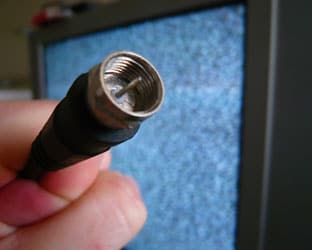SpectrumEvolution.org, the newly formed advocacy group, successfully performed a live demonstration of new OFDM-based hybrid mobile broadcast/broadband technology for the FCC on 11/17. SpectrumEvolution is promoting plausible broadcast spectrum policy, with a focus on how spectrum policy issues raised in the National Broadband Plan will impact all broadcasters.
CMMB (Converged Multimedia Mobile Broadcasting) America assisted in the demo, including flying personnel in from China. Tens of millions of CMMB receivers are already deployed in other countries.
To watch portions of the presentation, log on to: http://www.spectrumevolution.org/presentation-to-the-fcc
The FCC was represented by Rebecca Hanson, Senior Advisor/Special Counsel in the Media Bureau; Julius Knapp, Chief of the Office of Engineering and Technology (OET) and five OET staffers. Also in attendance were Mark Aitken, Director, Advanced Technology for Sinclair Broadcast Group and Scott Goodwin, Associate General Counsel, Legal and Regulatory Affairs for NAB.
“We presented and demonstrated some dynamic ideas that we believe, call into question many of the FCC’s assumptions relating to the need to destroy incumbent broadcast licensees to meet the objective of wider accessibility to wireless broadband,” the group said in a release. “The technology performed flawlessly, and we believe those in attendance were appropriately impressed with the maturity of the CMMB device ecosystem.”
The demo included seven video content streams, being fed to 12 different CMMB receivers, ranging from state-of-the-art cellular telephones to dedicated handheld devices. The devices used included products from Samsung, Motorola, HTC, LG and Sony-Ericsson.
SpectrumEvolution also discussed how these devices can be utilized for the reception of broadcast internet content, caching of most commonly viewed mobile internet info and methods for inclusion of an internet return path to provide interactivity using existing, out-of-band services.
Greg Herman, president of SpectrumEvolution.org, tells RBR-TVBR that outsourcing that return path may well be a better plan, “unleashing” the efficiencies that broadcasting has. The return path can use anything from 2G, 3G, 4G, WiFi and more: “All of those existing conduits can be utilized so that it acts as a proxy that uses us to ‘turbo-charge’ the downstream — where the real problem is – and use for the very minor amount of information that is necessary for interactivity (the upstream) in a mobile environment, those existing services.”
So if your cellphone, for example, has an app that allows you to use it for the return path from any other device, such as an iPad, it would work very easily and be simple to do, Herman tells us.
Herman adds: “We believe it is essential to challenge the FCC concerning their policies in this area and make certain they remember that they work for the American public and not simply as facilitators for allowing the wireless industry to assume control of not only conventional point-to-point wireless but also the point-to-multipoint distribution that broadcasters have faithfully provided for nearly a century.”
Beginning early in 2011, SpectrumEvolution.org plans to lobby Congress to make it “fully aware of the pending calamity that is about to be forced upon many of the broadcasters, including small business owners, women and minorities across the country, who serve audiences neglected by big stations. It is critical that Congress fully understand that the destruction of the broadcasting industry, in favor of greater consolidation of spectrum into the hands of wireless operators, is poor public policy at best and will serve only to destroy the rich history and diversity of voices unique to the U.S. broadcasting Industry,” the group said.




